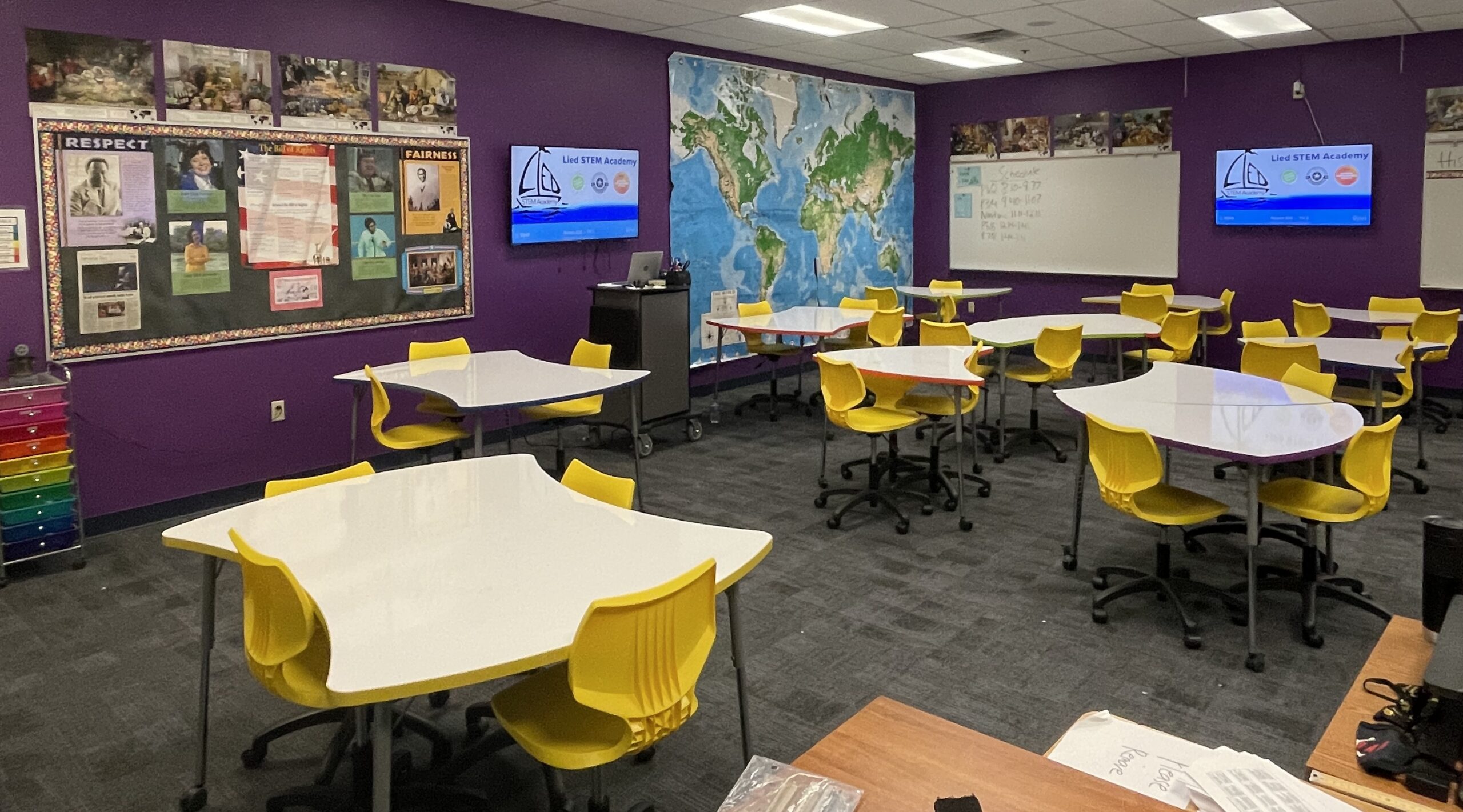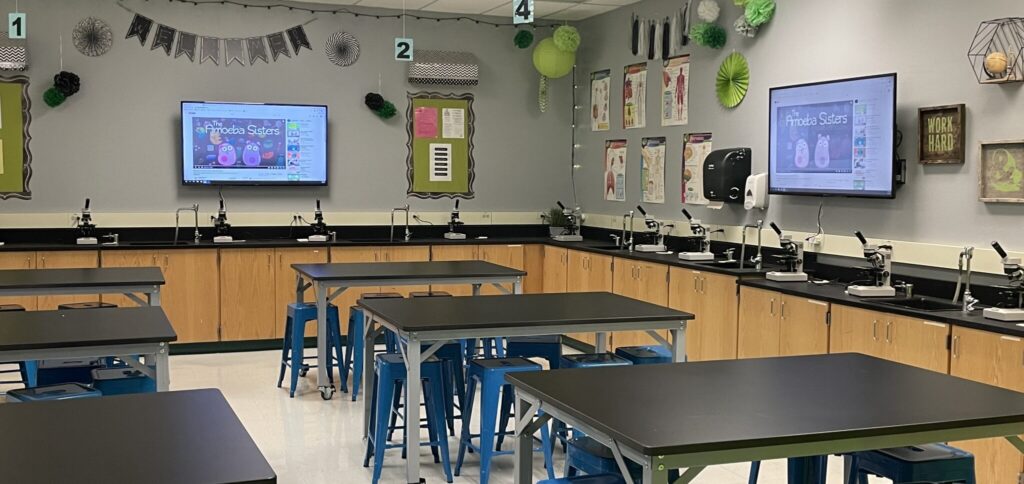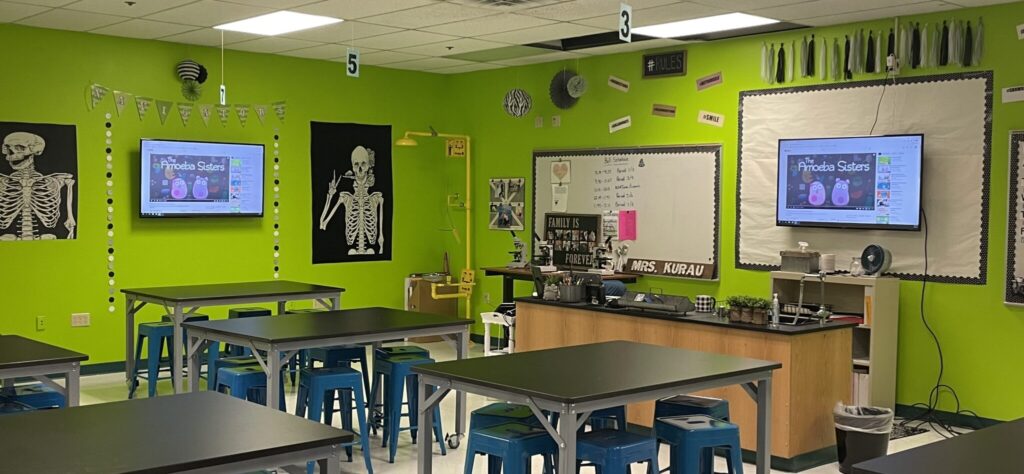
Imagine a classroom where every student is engaged, where lessons come alive with the help of technology. This dream is closer to reality than you might think. In the “Rethinking Classroom Technology” webinar hosted by Vivi, educational innovators Dr. Derek Fialkiewicz of Corbett School District and Buck Baskin of Sunnyvale Independent School District, along with Vivi’s VP of Educator Experience, Juliana Finegan, shared invaluable insights into making this vision a reality. Together, they explored the transformative power of technology in education, offering practical strategies and firsthand experiences on fostering dynamic, student-centered learning environments.
The webinar didn’t just showcase tools or solutions but illuminated a path towards educational transformation that respects the individuality of each student and the collective power of a classroom. It’s about leveraging technology not for the sake of novelty but to unlock deeper engagement, foster collaboration, and cater to diverse learning styles. This blog breaks down their conversation into actionable insights, aimed at helping educators and school administrators start making meaningful changes in their classrooms with technology.

Starting your classroom tech plan
Laying the Groundwork for transformation
Integrating technology into the classroom requires more than acquiring the latest gadgets. Rather, it demands a thoughtful approach tailored to your unique educational landscape. The experts from our webinar shared their essential steps for constructing a foundation for meaningful technological integration:
- Conduct a technology audit: Take stock of the tools and resources you already have. This step, emphasized by Dr. Fialkiewicz, ensures that any new technologies not only enhance but also complement existing assets, maximizing their utility and avoiding redundancies.
- Identify specific needs and challenges: Recognize that each learning environment has its own set of unique requirements and potential hurdles. Baskin highlighted the importance of doing this early in the process, enabling a targeted strategy that addresses real needs effectively.
- Reimagine educational spaces: The physical configuration of your learning spaces significantly influences the success of tech-enhanced learning. Flexible classroom designs that accommodate a variety of learning activities depart from the traditional, front-focused layout in favor of a more dynamic and inclusive environment.
- Incorporate diverse perspectives in planning: The most successful technology plans are those developed with representative input from across your entire educational community. Include teachers, students, IT staff, and administrators in your decision-making process. You’ll benefit from broader acceptance and more effective implementation.
- Foster a culture ready for innovation: Nurturing a mindset open to new ways of teaching and learning. Cultivating an innovative culture will encourage your educators and students to explore, adapt, and flourish in a continuously evolving educational landscape.
By addressing these critical areas, you will lay a solid foundation for integrating technology into your classrooms, setting the stage for a transformative impact on teaching and learning practices.
Elevating the educational experience: harnessing technology for impact
Crafting dynamic, inclusive learning environments
Dr. Fialkiewicz and Baskin shared insights into how they’ve harnessed technology to create learning environments that are not only more interactive but also deeply engaging and responsive to diverse student needs.
- Champion active learning: One of the critical shifts highlighted by Dr. Fialkiewicz is the move towards creating an environments that encourages students to be more active participants in their learning . Giving teachers the tools to gather feedback in real-time, facilitate collaboration, and support interactive discussions can dramatically enhance engagement and understanding.
- Encourage collaborative spaces: Baskin discussed how using platforms that support shared work and communication, can break down physical and conceptual barriers to collaboration. Students gain lasting benefits from engaging in cooperative learning experiences that mirror the nature of the modern workforce.
- Address diverse learning styles: Both educational leaders stressed the importance of technology in catering to the myriad ways students learn. Through the thoughtful integration of various tech tools, educators can offer differentiated instruction that meets individual learner needs, making education more accessible and effective for everyone.

Strategies for seamless tech integration
While the integration of technology into educational settings is inherently beneficial, it does come with its set of challenges. Here’s how these leaders have navigated potential obstacles:
- Ease of use is paramount: Technology must be intuitive for both educators and students. Teachers simply don’t have time to waste learning complicated tools or troubleshooting tech issues.
- Build a supportive infrastructure: Successful tech adoption relies on consistent, responsive support. Dr. Fialkiewicz shared how crucial it was to have a tech partner willing to listen and adapt to the specific needs of his district, ensuring that tech solutions evolve in tandem with educational goals.
- Cultivate an environment of exploration: Both panelists emphasized the importance of creating a culture that welcomes experimentation and innovation. After all, exploration and learning go hand in hand.
Charting the future with intentional tech integration
The Vivi experience: A testimonial to transformation
In navigating the complexities of bringing technology into the classroom, both leaders found a strategic partner in Vivi. “Vivi was a game-changer for us,” Dr. Fialkiewicz remarked, highlighting the profound effect of integrating a platform designed with the educator and student experience in mind. Vivi did more than streamline access to digital resources for teachers, it allowed them to focus more time and energy on teaching than on troubleshooting.
Reflecting on integration and looking ahead
Integrating technology like Vivi into educational practices isn’t just about keeping up with digital trends; it’s about intentionally selecting tools that align with pedagogical goals to create more dynamic, engaging, and inclusive learning environments. The experiences shared by Dr. Fialkiewicz and Baskin underscore this reality, revealing the power of strategic planning, stakeholder engagement, and a culture of innovation in navigating the tech integration landscape.
As you look ahead to the classrooms of the future, the insights from the webinar can serve as a guide for embracing technology in ways that truly advance the educational experience. Ready to transform your classroom with Vivi?
Discover how Vivi can play a pivotal role in your school’s educational transformation. Whether you’re looking to foster greater collaboration, support diverse learning styles, or simply give your teachers more flexibility, Vivi provides the tools and support to make it happen.
Book a demo today and see the difference Vivi can make in your educational practices.



